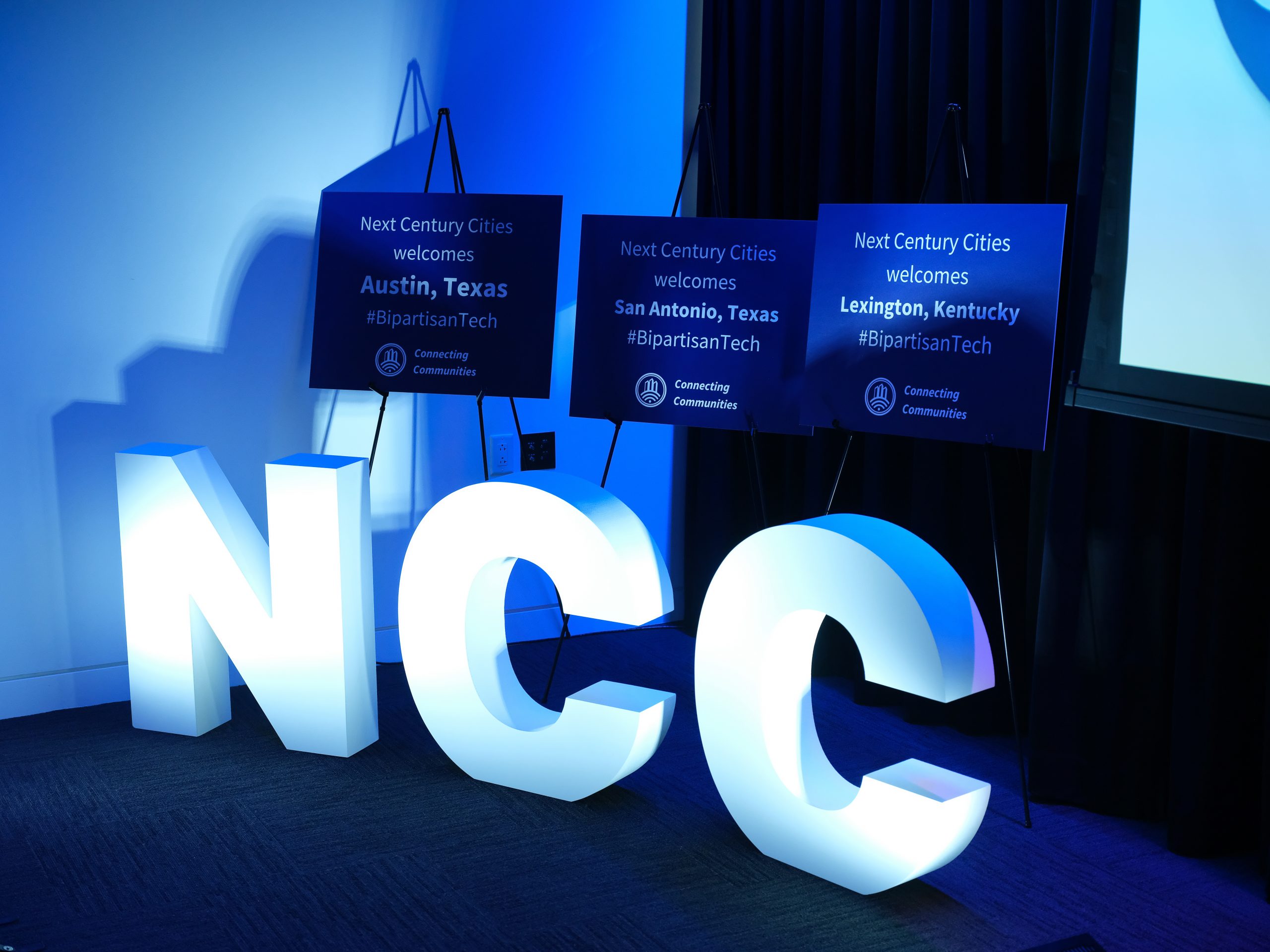
At a time when millions of Americans still do not have access to broadband of any kind, Next Century Cities is a resource for local leaders who are searching for connectivity solutions. Lifting up the voices of local broadband advocates, our work helps to ensure that lawmakers and policymakers understand what is at stake for our member communities, especially those that are still struggling to provide reliable, affordable broadband access for their residents.
Last week, the Benton Institute for Broadband & Society released Broadband for America’s Future: A Vision for the 2020s. It is a report by Senior Fellow Jonathan Sallet that is sure to bring Next Century Cities’ member municipalities and others a step closer to a shared goal of ensuring that every community has access to high-speed connectivity.
Sallet offers a masterful account of the policy landscape while conveying a sense of urgency for broadband infrastructure to be a national priority. His report weaves together policy analysis, impact stories, and thoughtful recommendations, which can be reduced into four main building blocks needed to expand access over the next decade.
- Broadband networks must be deployed where adequate connectivity does not exist;
- Competition helps to increase choice, lower prices, and improve service quality;
- Affordability and adoption are as important as access to broadband; and
- Schools, libraries, and other anchor institutions play an important role in achieving ubiquitous broadband access.
The report highlights Next Century Cities’ member stories, documenting their ability to overcome unique challenges with creative solutions.
- Fiber-optic networks in Chattanooga, TN, and Lafayette, LA, created thousands of new jobs and revenue.
- Portland, OR, and Charlotte, NC, shared why connectivity was essential for attracting new business and fostering entrepreneurship.
- Stories from Wilson, NC, Longmont, CO, Fort Collins, CO, Centennial, CO, illustrate why more competition ultimately benefits consumers.
- Kansas City, KS and MO, show how a collaboration between a municipality and a new broadband provider can create efficiencies.
- San Jose, CA, developed a strategy to ensure that 5G reached unserved and underserved communities.
- Lawrence, KS, leased excess fiber to a small provider and accelerated deployment.
- Westminster, MD, entered into a partnership with a competitive broadband provider to manage a local network.
- Fairlawn, OH, invested $10 million into a municipal network that currently reaches over 1,500 homes and 250 businesses.
- Ammon, ID, developed an open-access model in which each residential customer pays a fee that covers the cost of network construction and a separate subscription fee to a service provider.
- Virginia Beach, VA, saves hundreds of thousands of dollars per year by connecting the city’s government buildings, schools, libraries, and police and fire stations through its own fiber network.
- San Francisco, CA, used city owned dark fiber to help bring broadband to public-housing residents.
- Reports commissioned by Austin, TX, and Seattle, WA, found that residents near the poverty line report cost as an insurmountable hurdle to broadband adoption.
- Lack of competition led advocates in South Bend, IN, to form an alternative, open-access broadband provider.
- Austin, TX, Kansas City, MO, Charlotte, NC, Louisville, KY, and Seattle, WA, are examples of cities that have made digital inclusion a priority.
Next Century Cities’ members are united in a commitment to bring the next generation of connectivity within reach for every resident. Click here for information about NCC membership. Click here to review Sallet’s report. Send comments, ideas, and opinions about the research to broadband@benton.org.

